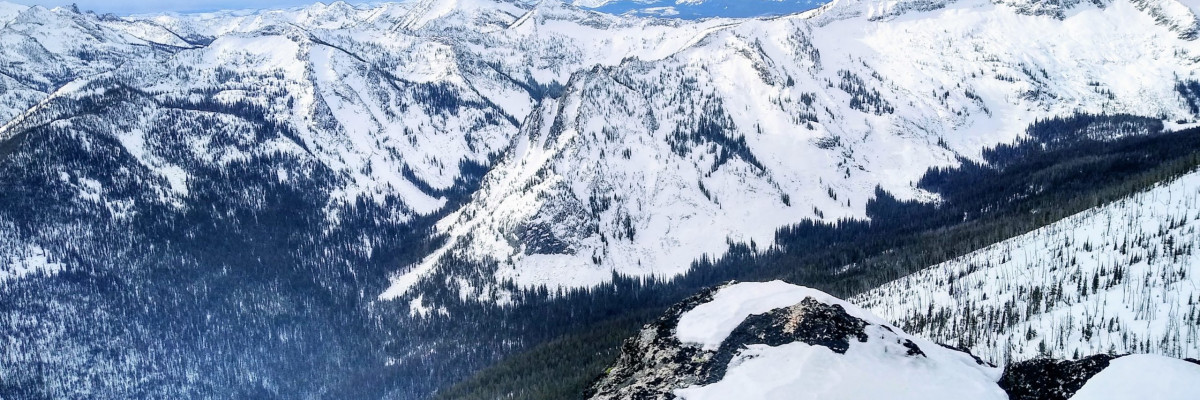The avalanche danger for the west central Montana backcountry is stout MODERATE in areas with a shallow snowpack. Areas with a thick base are less touchy.
Good morning, this is Jeff Carty with the West Central Montana Avalanche Center’s avalanche advisory for January 21, 2020. This danger rating does not apply to operating ski areas, expires at midnight tonight, and is the sole responsibility of the U.S. Forest Service.
In areas of shallower snowpack, roughly 5 feet or less, there is a higher likelihood of triggering avalanches on the persistent weak layers at the base of the snowpack. A remotely triggered slide Sunday near Lost Trail ski area tells us these layers are still active. This ran on depth hoar, near the ground with a four-foot slab, in trees.
The southern Bitterroot has the shallowest snowpack in the forecast area and, as a result, has the highest avalanche likelihood. Mid elevation slopes throughout the forecast area where the snowpack is thinner may have similar probability.
In areas with a thick base, such as the central Bitterroot and Seeley lake zone, the snowpack has stabilized, and the likelihood of triggering an avalanche is getting lower. In some places, the snowpack is up to 7 feet deep. However, the possibility to trigger a slide in these areas may still exist, especially near rock outcroppings and thin areas.
Freezing levels are forecast to rise to 5500 feet today and may create a thaw instabilities, increasing the likelihood of avalanches. Take extra caution if you notice dripping trees, rollerballs, or packable snow.
With the freezing level forecast to rise to 6500 feet Wednesday night, and precipitation throughout the week, expect avalanche danger to increase. Conditions such as this may reawaken the depth hoar layer and result in large avalanches.
Always carry your safety equipment — beacon, probe, and shovel.
If you want to increase your competence in avalanche terrain, check out our education page.
Join us for an avalanche awareness talk from 7:00 to 8:00 pm Wednesday the 22nd at Trailhead.
Your avalanche, snowpack, and weather observations help us keep the public informed and assist us when generating the advisory. Please help us continue to better understand the snowpack, and submit your observations here.
Ski and ride safe
























